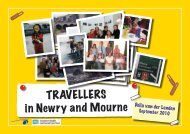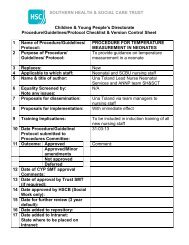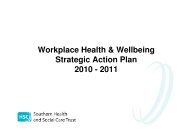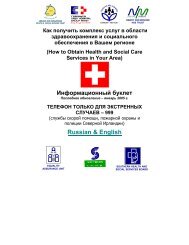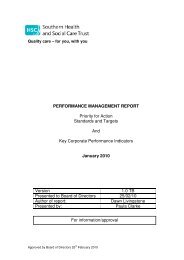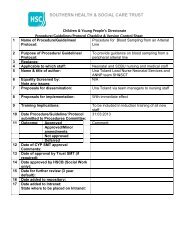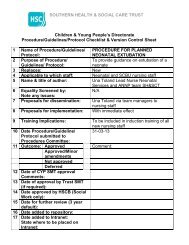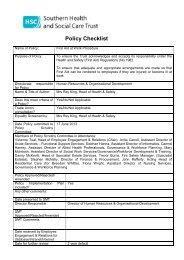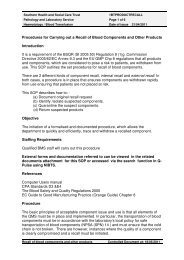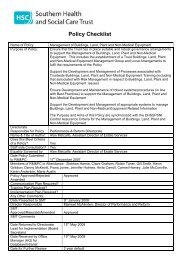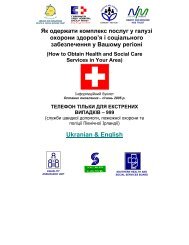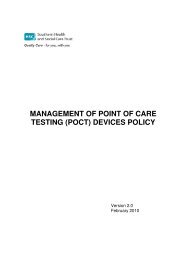Visual News - Issue 5, Winter 2010 - Southern Health and Social ...
Visual News - Issue 5, Winter 2010 - Southern Health and Social ...
Visual News - Issue 5, Winter 2010 - Southern Health and Social ...
Create successful ePaper yourself
Turn your PDF publications into a flip-book with our unique Google optimized e-Paper software.
Guide Dogs for the Blind Sighted Guide Service,by Millicent Brown.I joined Guide Dogs for the blind Association (GDBA) in August2009, <strong>and</strong> amongst the other enjoyable aspects of my job I amexcited to be involved in a pilot service which aims to help peoplewho, as a result of their visual impairment, are quite isolated withintheir community.Our sighted guide service is by no means to replace the work doneby your Rehabilitation Worker, based within your local ResourceCentre, but, to compliment their service.Our service aims at training a number of „sighted guide volunteers‟to guide people for a period of approximately 3 months so that theymay become involved in activities such as going for coffee,shopping, attending a leisure activity, or simply going for a walk.Although the pilot is being rolled out slowly, our first sighted guideshave been trained <strong>and</strong> a few are already providing support topeople such as a young man who up until he met S<strong>and</strong>ra, hisvolunteer, only ever went out with his elderly father for theoccasional ten minute walk to the local shops. The greater part ofhis time has been spent on his own, in his flat, on the top floor of atower block. Due to his severe visual impairment, which hedescribes as seeing, “light <strong>and</strong> dark, shapes <strong>and</strong> shadows”, he wasinitially nervous <strong>and</strong> reluctant to avail of the service. After just 4sessions he was waiting expectantly in his coat <strong>and</strong> hat whenS<strong>and</strong>ra arrived to take him out for his weekly walk <strong>and</strong> cup ofcoffee. She says that he is already becoming familiar with hissurroundings <strong>and</strong> gaining a sense of where he is in hisenvironment. However, this is not a befriending service. It is thefirst step along what we hope will be a move to greaterindependence. Whenever the agreed number of sessions come toan end it is envisaged that people will have gained the confidenceto proceed to long cane training with their Rehabilitation Worker inthe <strong>Health</strong> Trust, <strong>and</strong> following this perhaps learning to walkindependently with the use of a guide dog.It is not anticipated that everyone who receives this service willbecome a cane user or guide dog owner, our main aim is toincrease confidence <strong>and</strong> foster a desire to take the first stepsPage 26 of 38



